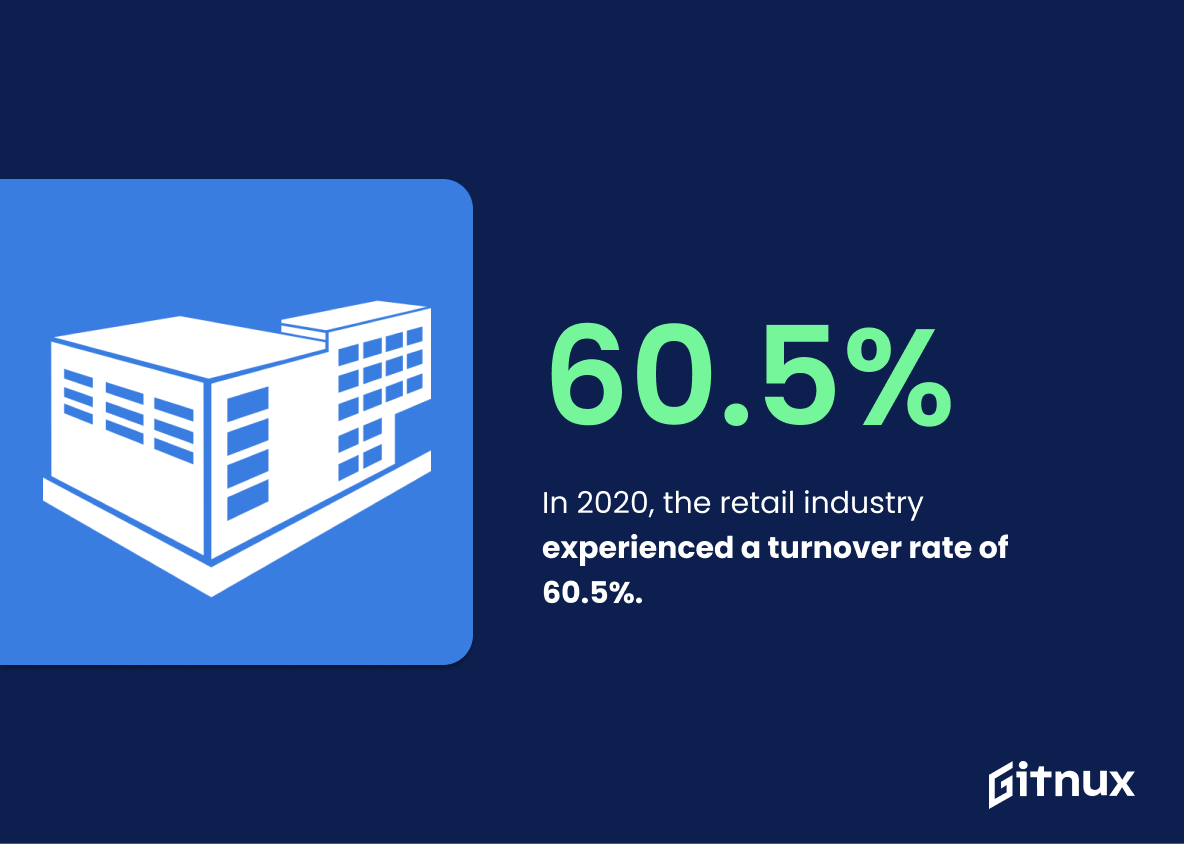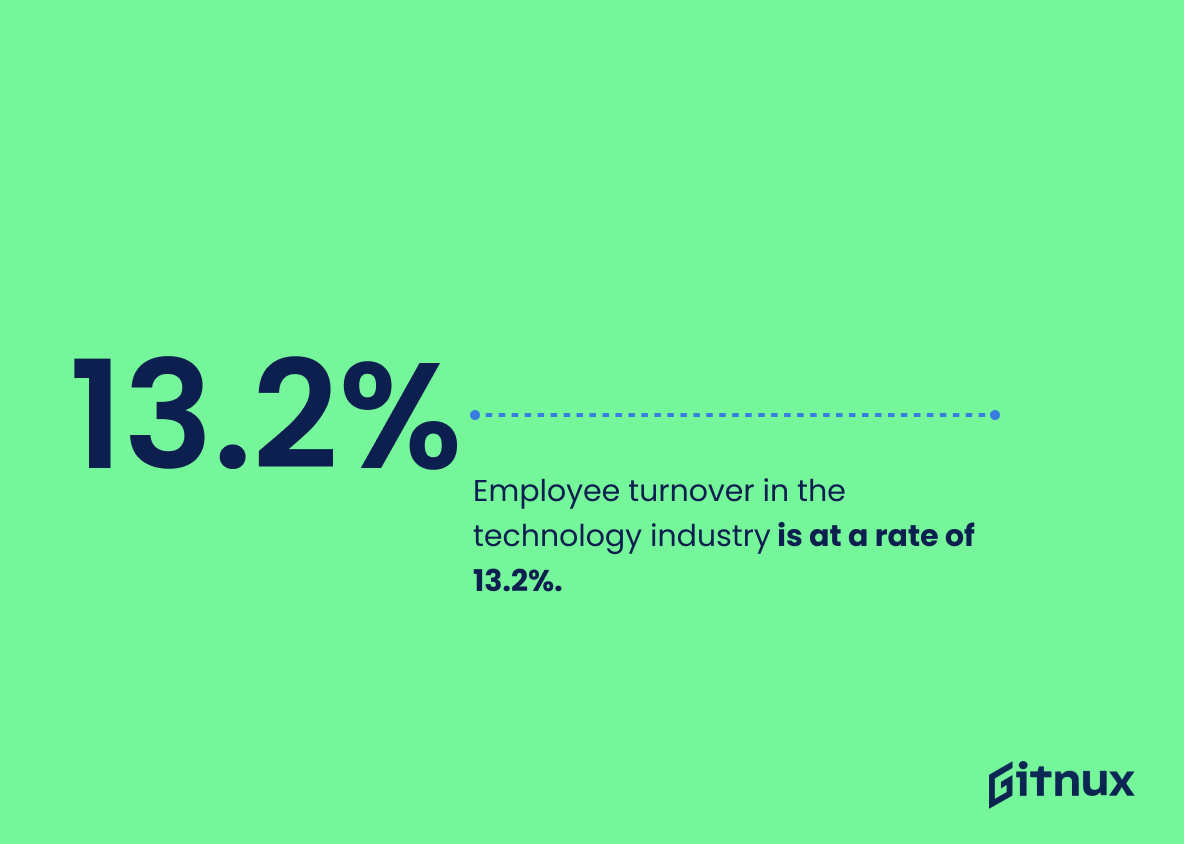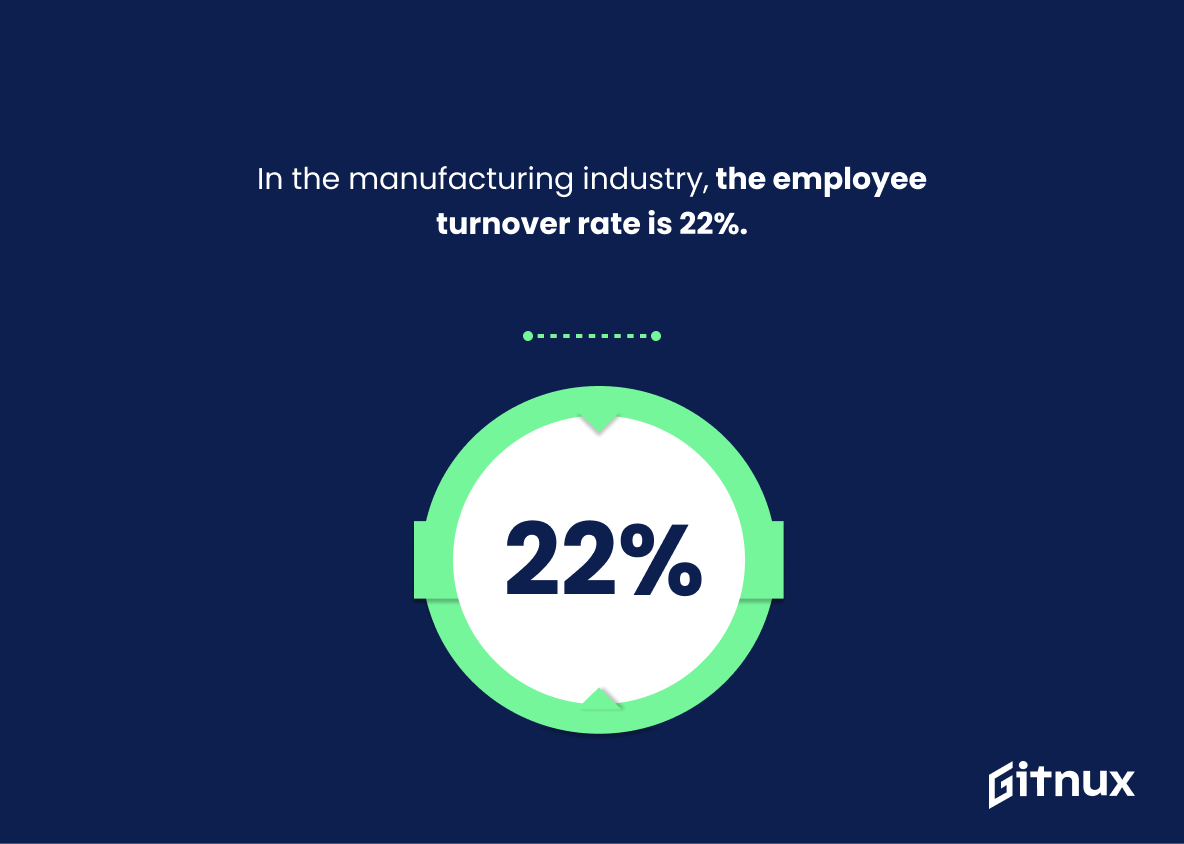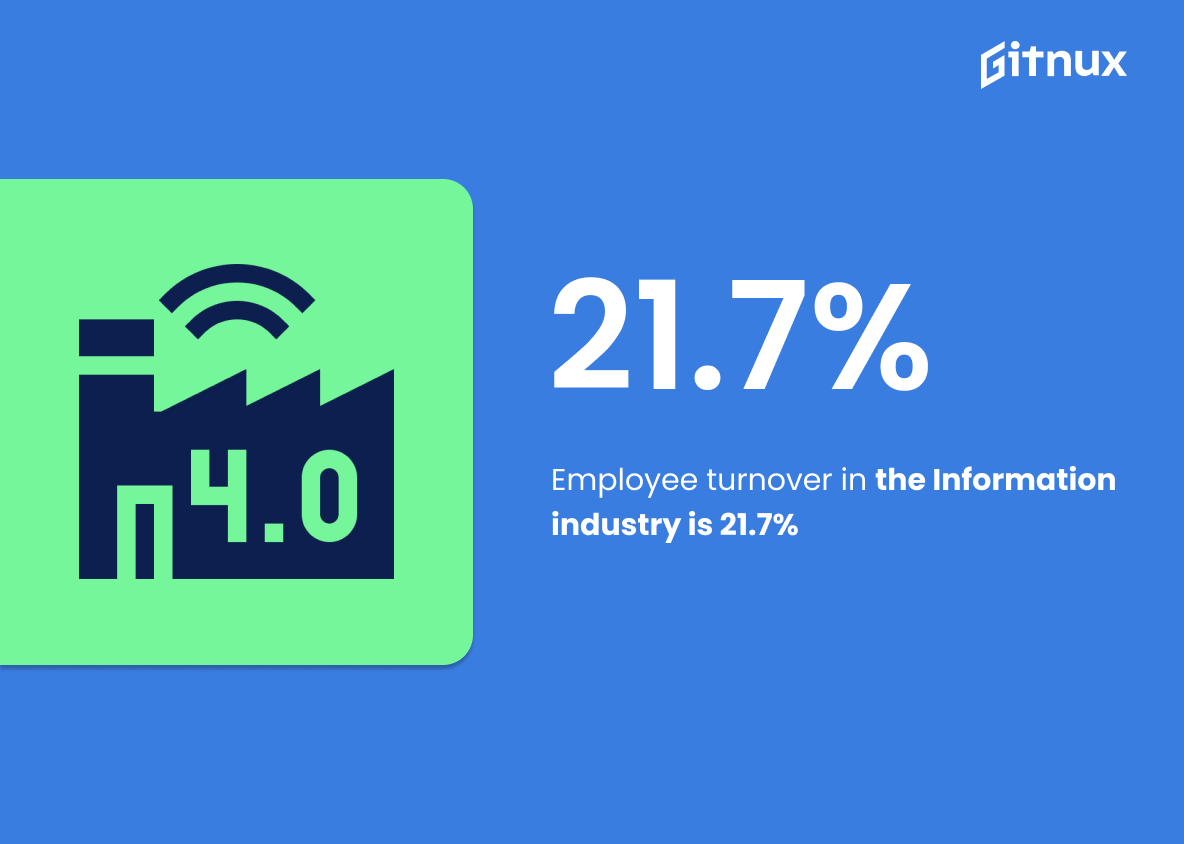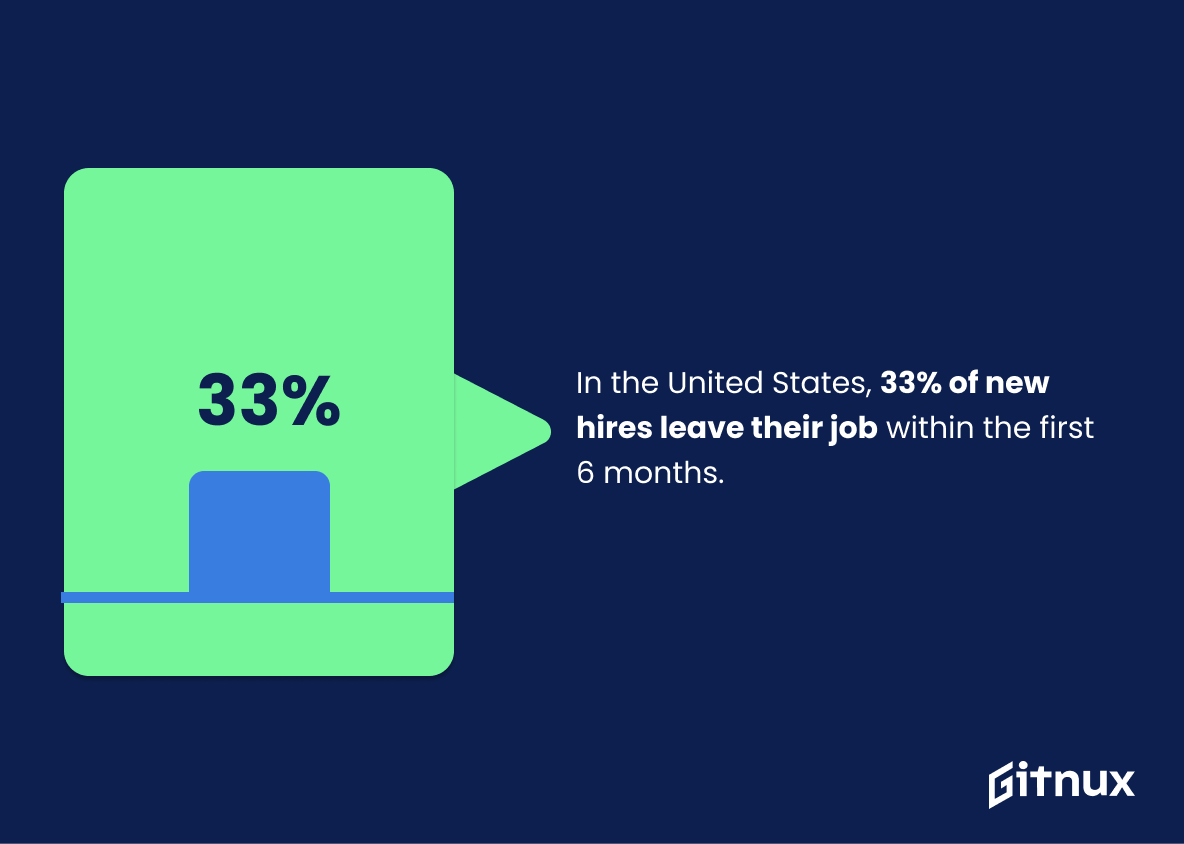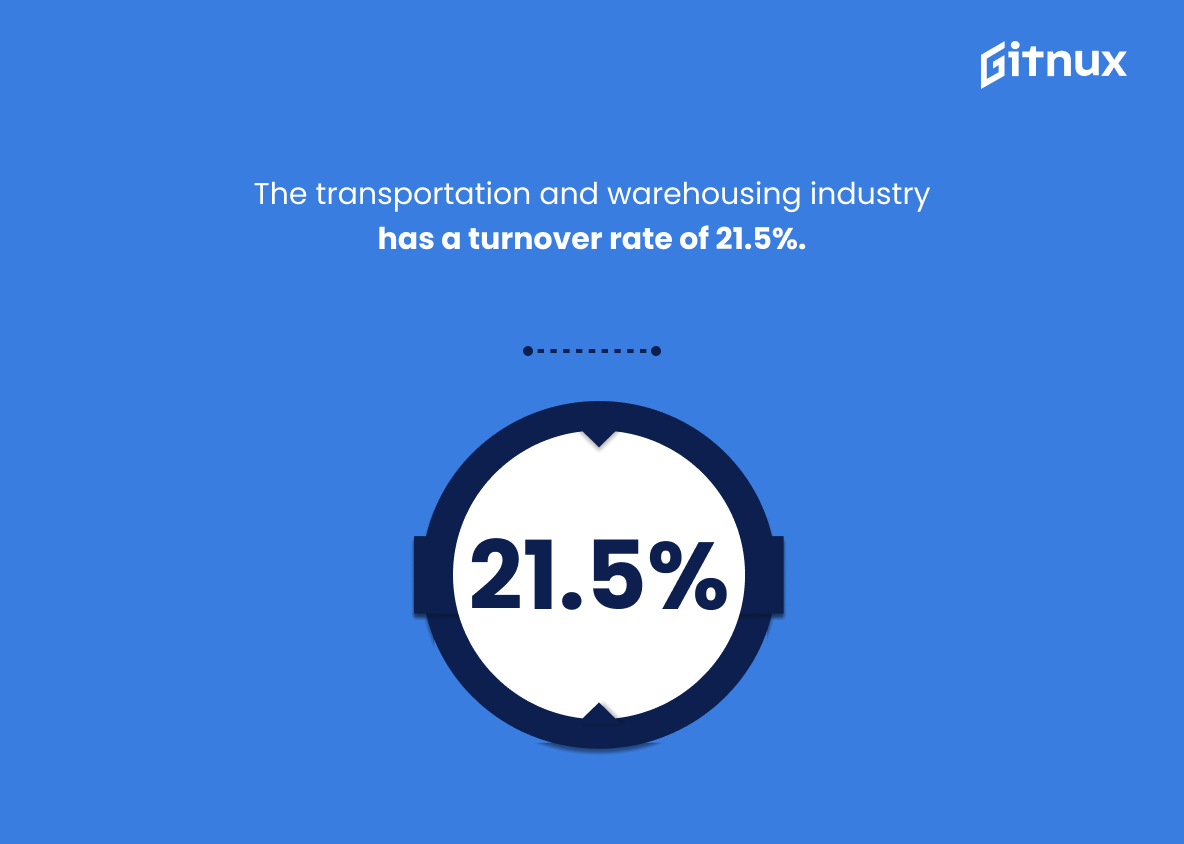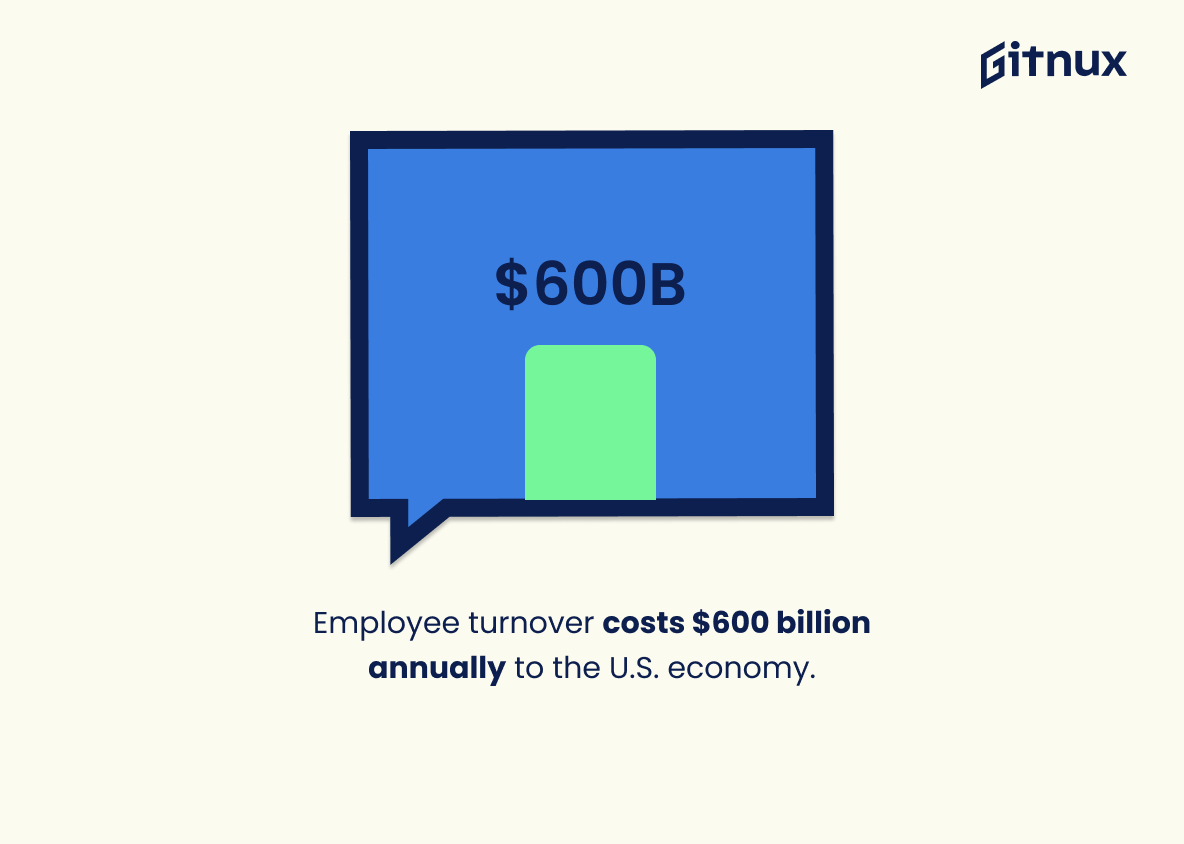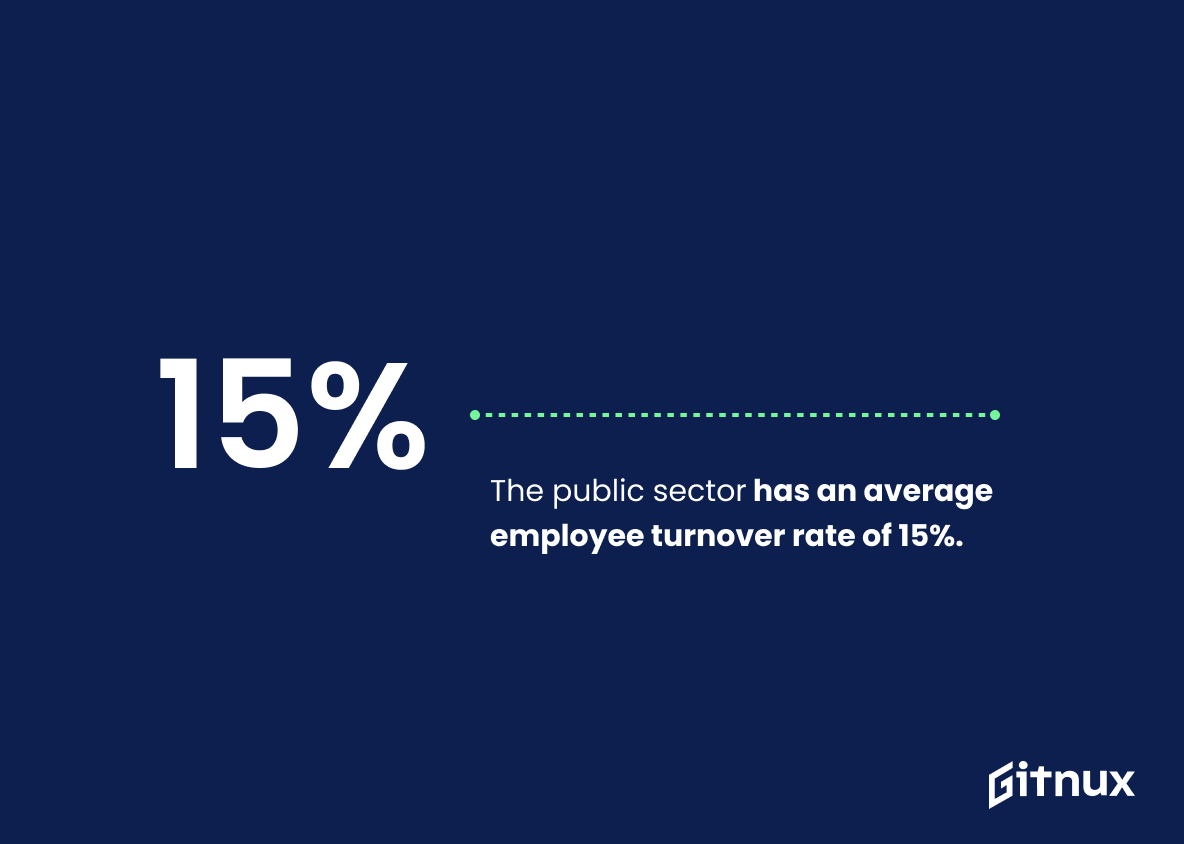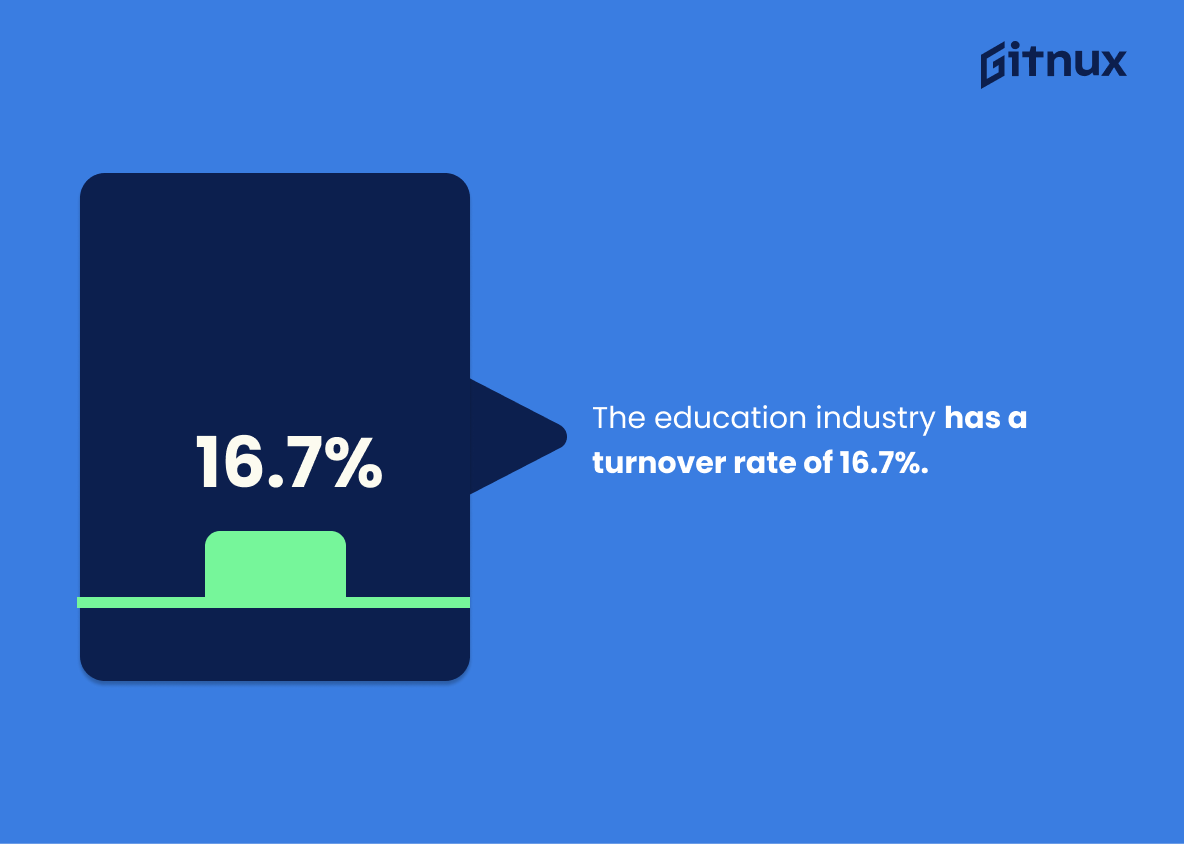Employee turnover is an important factor for businesses to consider when evaluating their workforce. It can have a significant impact on the bottom line, as well as employee morale and productivity. Understanding industry-specific trends in employee turnover rates can help employers make informed decisions about how best to manage their staff and retain top talent.
This blog post will explore 20 statistics related to employee turnover across various industries, including hospitality, retail, healthcare, technology, finance/insurance manufacturing and more. We’ll also look at overall costs associated with high levels of attrition in the U.S., along with insights into millennial employees’ retention rates and engagement levels among those who stay put longer term.
Employee Turnover Industry Statistics Overview
In 2020, the retail industry experienced a turnover rate of 60.5%.
This statistic is a telling indication of the state of the retail industry in 2020. It highlights the fact that the industry has seen a significant amount of turnover, with more than half of its employees leaving their positions. This statistic is important to consider when discussing employee turnover industry statistics, as it provides insight into the current state of the retail industry and the challenges it faces in retaining its workforce.
The healthcare industry has an average turnover rate of 20.6%.
This statistic is a telling indication of the state of the healthcare industry, highlighting the fact that employee turnover is a major issue in the sector. It is a stark reminder that healthcare organizations need to take proactive steps to reduce turnover and ensure that their employees are engaged and satisfied with their work. This statistic is an important piece of information for anyone looking to gain insight into the employee turnover industry.
Employee turnover in the technology industry is at a rate of 13.2%.
This statistic is a telling indication of the current state of the technology industry. It speaks to the rate at which employees are leaving their positions, and the potential implications this could have on the industry as a whole. It is an important statistic to consider when discussing employee turnover industry statistics, as it provides insight into the current trends and challenges that the technology industry is facing.
The finance and insurance sector has an employee turnover rate of 18.6%.
This statistic is a telling indication of the state of the finance and insurance sector when it comes to employee turnover. It suggests that the sector is struggling to retain its employees, which could be due to a variety of factors such as low wages, lack of job satisfaction, or a lack of career advancement opportunities. This statistic is an important piece of information for anyone looking to gain insight into the employee turnover industry.
In the manufacturing industry, the employee turnover rate is 22%.
This statistic is a telling indication of the state of the manufacturing industry when it comes to employee turnover. It speaks to the level of job satisfaction and stability that employees in the manufacturing industry experience, and can be used to inform decisions about how to best retain and attract talent in the sector.
Employee turnover in the Information industry is 21.7%
This statistic is a telling indicator of the Information industry’s struggle to retain employees. It speaks to the difficulty of creating a workplace environment that is conducive to employee satisfaction and loyalty. With such a high turnover rate, it is clear that the Information industry needs to take a closer look at its practices and policies in order to ensure that its employees are happy and productive.
The construction industry has a 21.4% turnover rate.
This statistic is a telling indication of the state of the construction industry when it comes to employee turnover. It suggests that the industry is struggling to retain its workforce, which could be due to a variety of factors such as low wages, lack of job security, or a lack of career advancement opportunities. This statistic is an important piece of information to consider when discussing employee turnover industry statistics.
Employee turnover in small businesses is 22.2%.
This statistic is a telling indication of the prevalence of employee turnover in small businesses. It serves as a reminder that turnover is a reality that small businesses must be prepared to face and manage. It is an important statistic to consider when discussing the overall employee turnover industry, as it provides insight into the unique challenges that small businesses face in this area.
In the United States, 33% of new hires leave their job within the first 6 months.
This statistic is a stark reminder of the importance of employee retention in the United States. It highlights the need for employers to invest in strategies that will help them retain their new hires and ensure that they stay with the company for the long-term. This statistic is a key indicator of the current state of employee turnover in the United States and should be taken into consideration when discussing the topic of employee turnover industry statistics.
The transportation and warehousing industry has a turnover rate of 21.5%.
This statistic is a telling indication of the transportation and warehousing industry’s struggle to retain employees. With a turnover rate of 21.5%, it is clear that the industry is having difficulty keeping its workforce engaged and satisfied. This statistic is a reminder that the transportation and warehousing industry needs to take steps to improve employee retention and satisfaction in order to remain competitive.
Millennial employees have a turnover rate of 26.0%.
The fact that Millennial employees have a turnover rate of 26.0% is a telling statistic that should not be overlooked. This statistic speaks to the importance of understanding the needs of this generation of employees and how to best retain them. It is a reminder that employers must be proactive in creating an environment that is conducive to the success of their Millennial employees.
Employee turnover costs $600 billion annually to the U.S. economy.
This statistic serves as a stark reminder of the immense financial burden that employee turnover places on the U.S. economy. It is a staggering figure that highlights the need for businesses to invest in strategies to reduce turnover and retain their employees. This statistic is a powerful motivator for businesses to take action and invest in employee retention initiatives.
The public sector has an average employee turnover rate of 15%.
This statistic is a telling indication of the public sector’s ability to retain employees. It speaks to the effectiveness of the sector’s recruitment and retention strategies, and provides insight into the overall job satisfaction of public sector employees. By understanding the public sector’s employee turnover rate, we can gain a better understanding of the industry as a whole and the challenges it faces in terms of employee retention.
The education industry has a turnover rate of 16.7%.
The education industry’s 16.7% turnover rate is a telling statistic that speaks volumes about the state of the industry. It indicates that the education sector is facing a high rate of employee turnover, which can have a significant impact on the quality of education and the overall success of the industry. This statistic is an important one to consider when discussing employee turnover industry statistics, as it provides insight into the challenges that the education sector is facing.
Companies with high levels of employee engagement have a turnover rate of 9%.
The statistic that companies with high levels of employee engagement have a turnover rate of 9% is a powerful reminder of the importance of employee engagement in reducing turnover. It highlights the fact that when employees feel valued and engaged in their work, they are more likely to stay with the company, resulting in a lower turnover rate. This statistic is a valuable insight into the impact of employee engagement on turnover, and should be taken into consideration when discussing employee turnover industry statistics.
Employee turnover in the pharmaceutical industry is 10.3%.
This statistic is a telling indication of the state of the pharmaceutical industry when it comes to employee turnover. It provides insight into the rate at which employees are leaving the industry, and can be used to identify potential areas of improvement. By understanding the rate of turnover, employers can better understand the needs of their employees and make changes to ensure that they are able to retain their staff. This statistic is an important piece of information for anyone looking to understand the current state of the pharmaceutical industry.
Conclusion
Employee turnover is a significant concern for businesses worldwide. The U.S. sees an average annual turnover rate of 12-15%, with hospitality (73.8%), retail (60.5%), and healthcare (20.6%) industries having higher rates. Industries like technology (13.2%), finance & insurance (18.6%), and manufacturing (22%) have comparatively lower rates.
Turnover costs businesses around $11 billion annually and the U.S. economy up to $600 billion per year due to productivity loss from new hires or training replacements. Notably, 33% of new hires, according to SHRM data, leave within six months of recruitment.
Millennials, with a job-hopping rate of 26% compared to 19% for non-millennials, exacerbate these costs. However, higher workforce engagement can mitigate this, as highly engaged teams typically have a lower turnover rate of 9%.
The pharmaceutical industry stands out with a relatively stable 10% attrition rate. No universal solution exists for employee turnover, but understanding industry dynamics and improving engagement levels can help reduce costs associated with frequent staff changes.
References
0. – https://www.shrm.org
1. – https://www.linkedin.com
2. – https://www.bls.gov
3. – https://www.salary.com
4. – https://www.constructiondive.com
5. – https://www.forbes.com
6. – https://www.trainingmag.com
7. – https://www.ropella.com
8. – https://www.gallup.com
9. – https://www.ceoworld.biz
10. – https://www.resources.careerbuilder.com
